2013
Material: plastic Pinocchio nose with elastic chord, plastic magnetic egg, paper clips, Humpty Dumpty piggy bank, plastic egg tray, metal spoon, stainless steel egg hand cleaner, egg shell, two dry-point etching’s on watercolour paper, espresso cup, plates, magnetic paint, magnetic stirrer, pot, wooden tables, paper mache, paint, rubber gloves, tape, photograph in lightbox
Dimensions variable
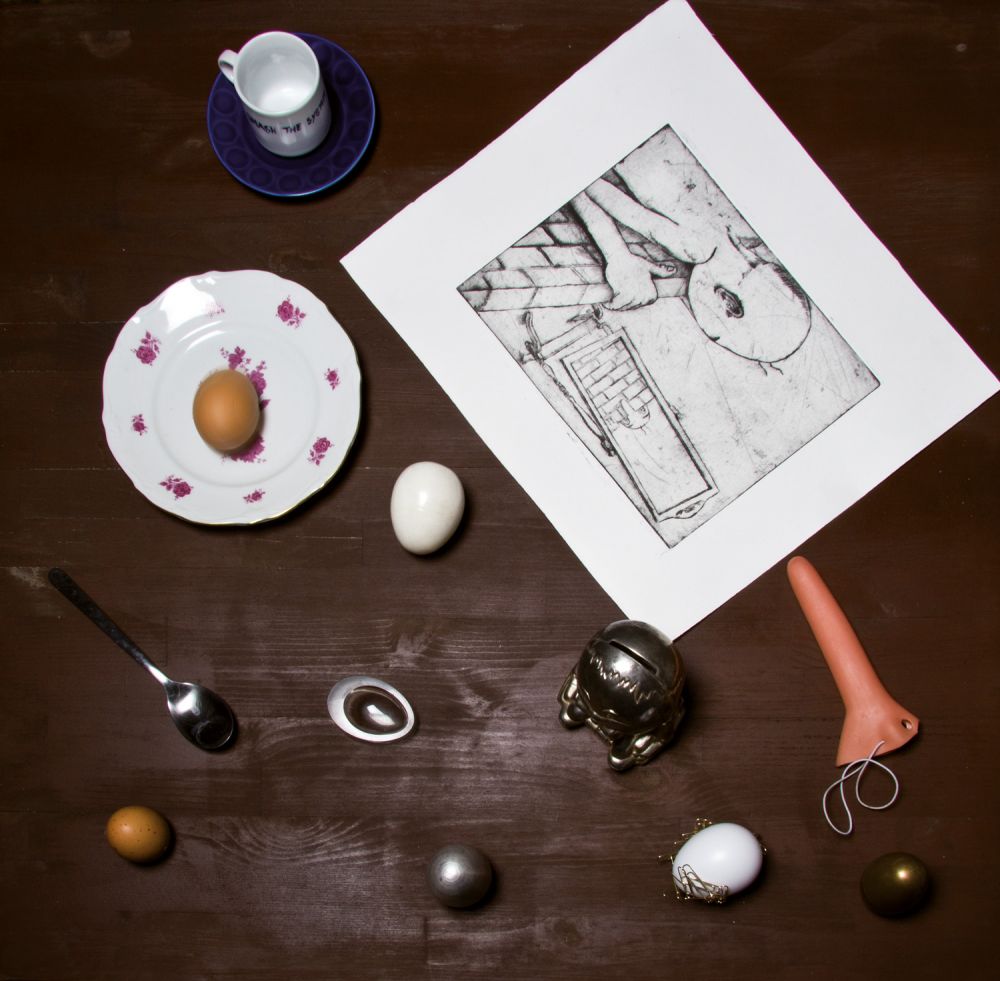
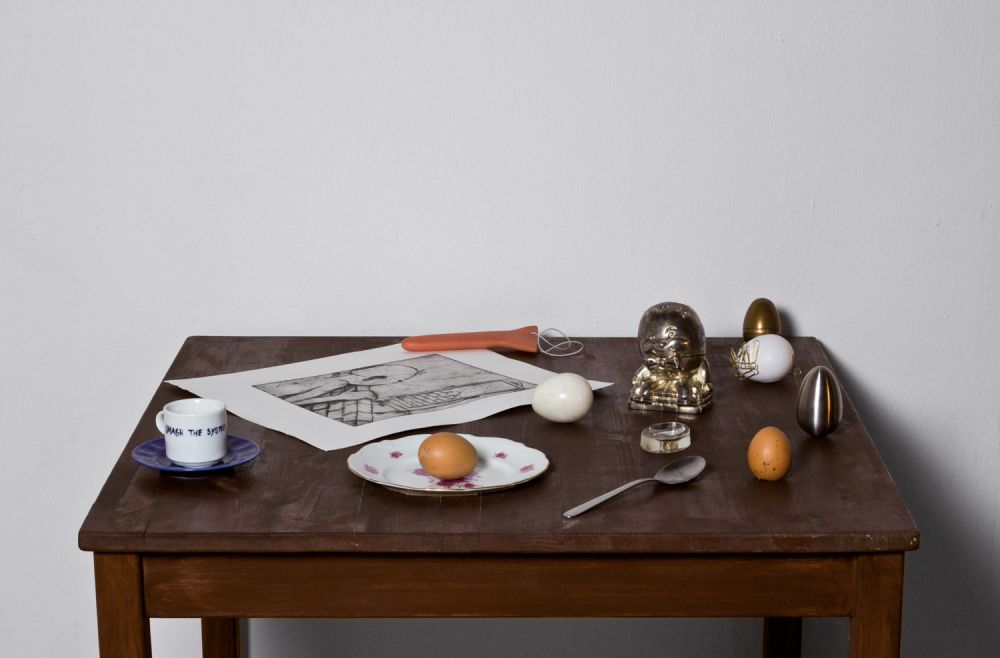
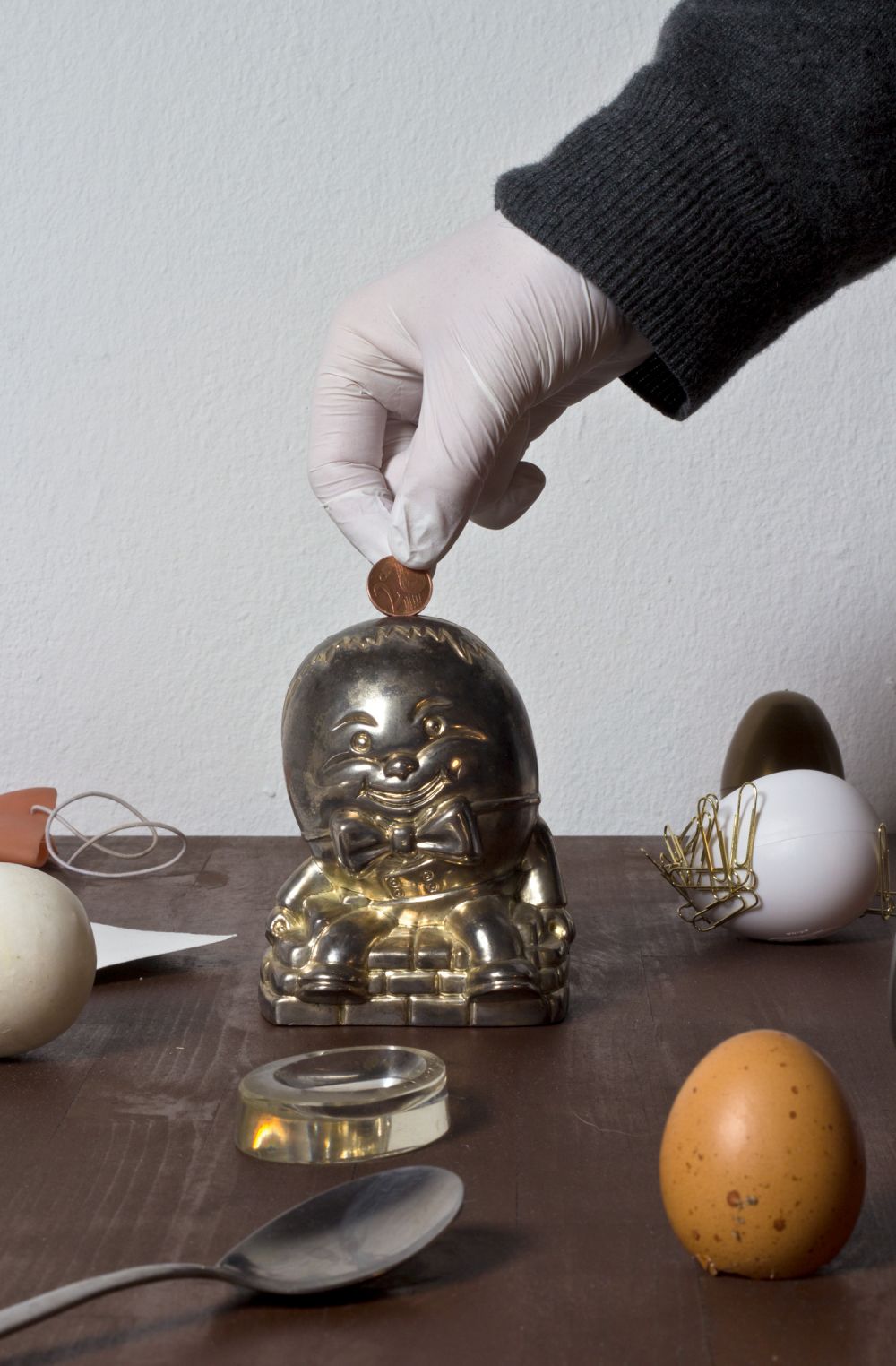
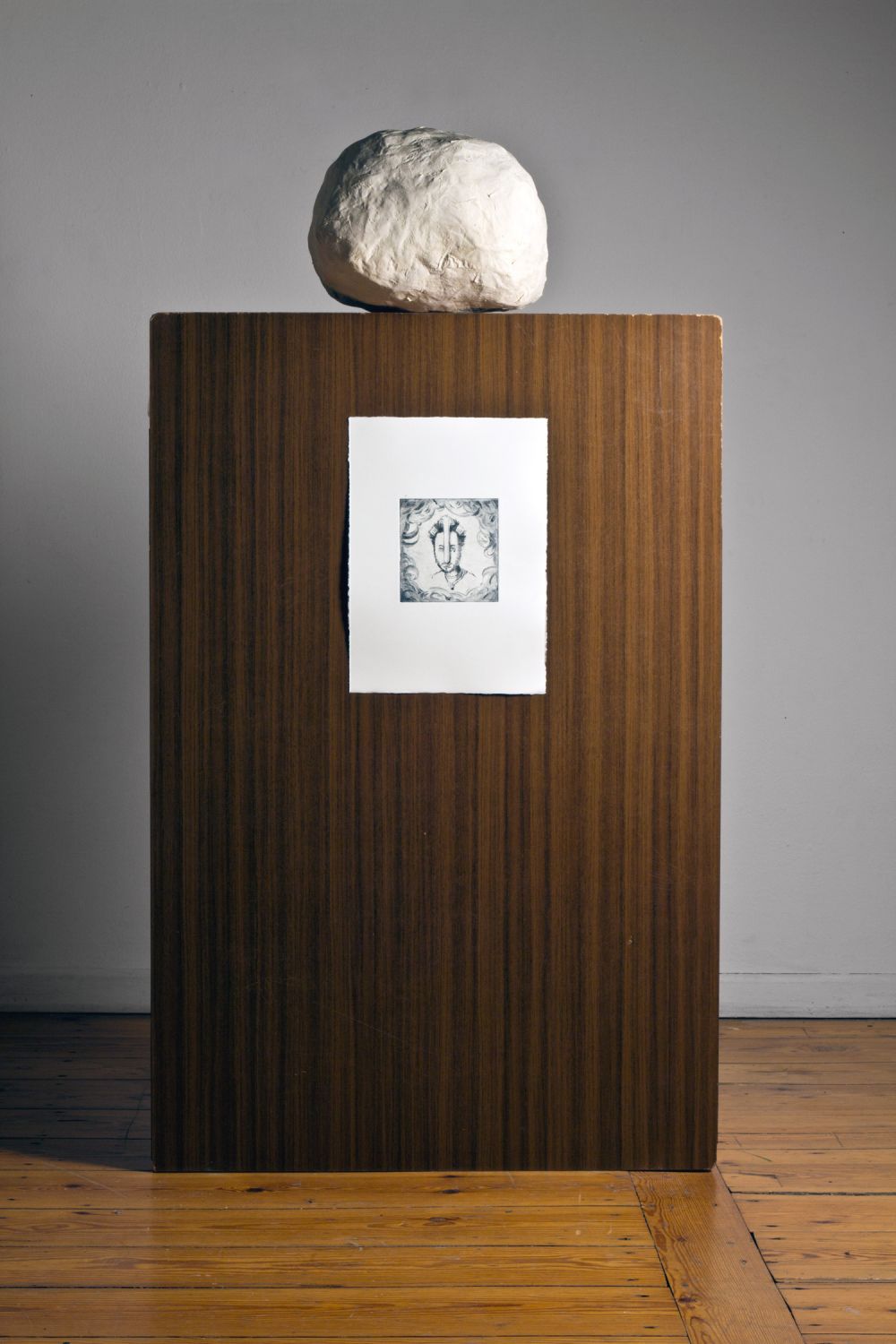
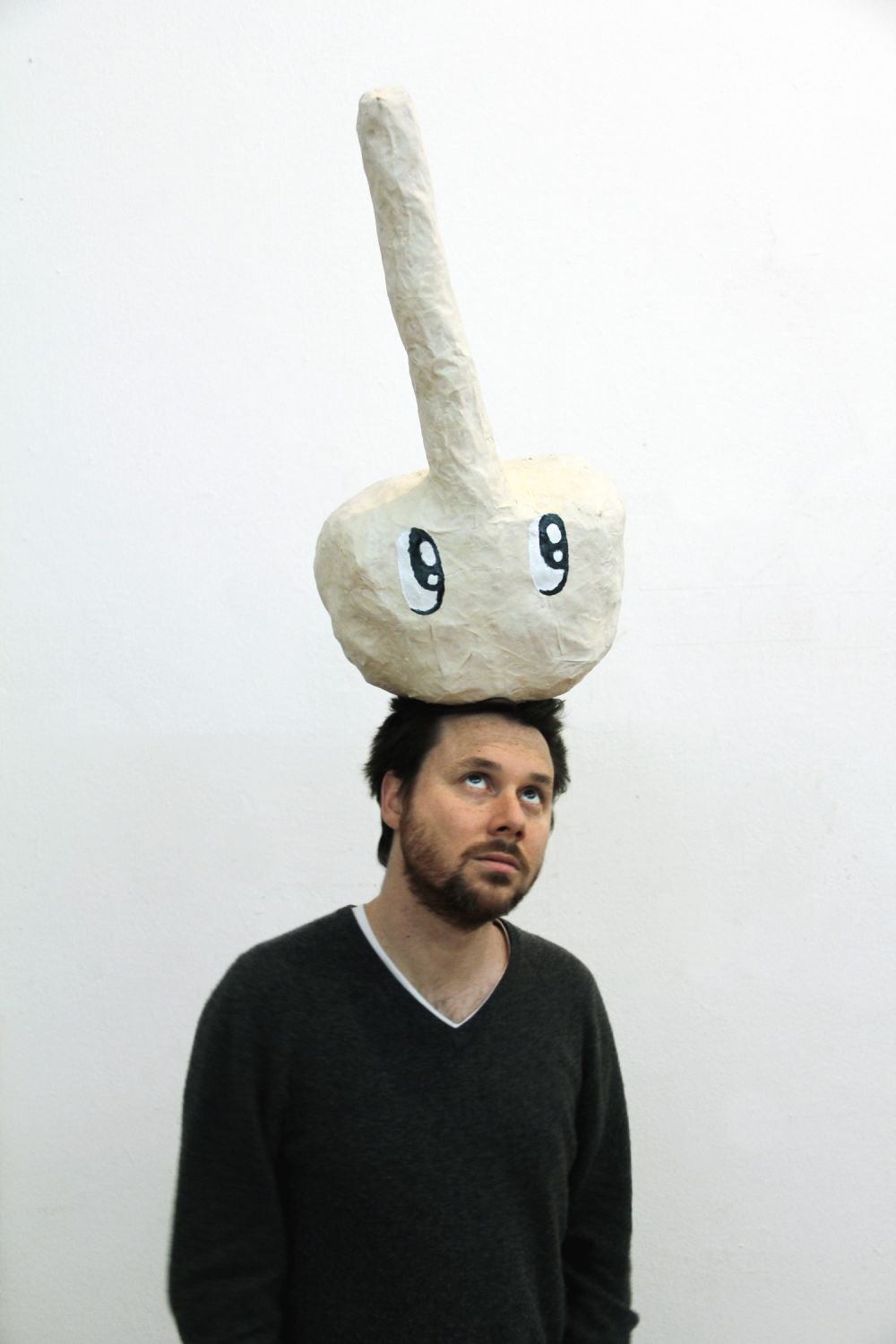
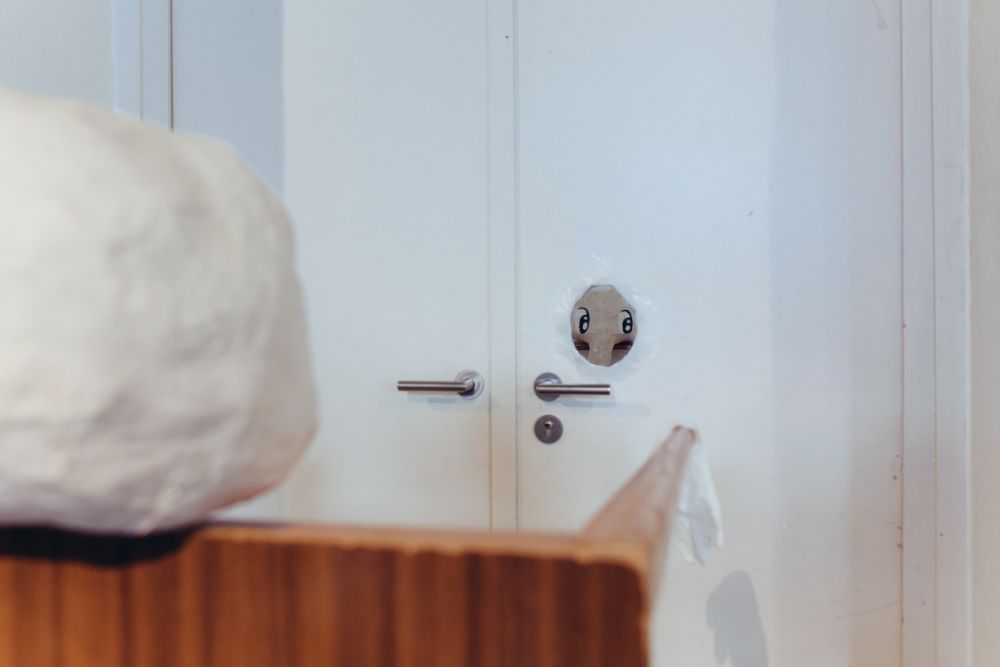
Downey’s Was Here is an installation that literally revolves around an egg. The breakfast table features an egg, which appears to be spinning of its own accord on a plate, and a Humpty Dumpty character piggy-bank, with a coin slot that leads straight through the table onto the floor. The link between these elements is rather obscure or autobiographical, but then the egg – despite its comical, humble appearance – is a deeply enigmatic object that still perplexes us today (which did come first: the chicken or the egg?) and whose form turns up in the strangest places. Who would have thought that a radiation map of our universe in the distant past would show it to be egg-shaped?
The illusion of the egg spinning on a breakfast plate in Was Here is in fact created by an egg filled with magnetic paint, spinning on an electromagnetic device (a ‘magnetic stirrer’) hidden under the table. The spinning egg is a homespun version of an experiment designed by the maverick Serbian-American inventor Nikola Tesla in 1893 to demonstrate the principles of the rotating magnetic field – though with a copper egg rather than a real one. The device he used was nicknamed the ‘Egg of Columbus’, after the myth about Christopher Columbus who, annoyed at the demeaning suggestion that someone else would have eventually discovered the Americas, challenged his entourage to make an egg stand on its tip. When his critics failed to do so, he showed them how it was done: by simply tapping one end of the egg to flatten it slightly. The expression ‘Egg of Columbus’ came to be associated with the idea of something that seems easy after the fact. I can see that Downey would be drawn to this idea, given that the most common critique of both contemporary art and graffiti is how simple it looks – how even a child could do it.
An etching on the table depicts the metamorphosis of the artist, Brad Downey, into the mythical character Kilroy – from the well-known graffiti tag ‘Kilroy Was Here’ of a bald man’s head (an egg-head) with a large nose peering over a wall. In Downey’s version, Kilroy’s nose grows, Pinocchio-like, even longer and more obviously phallic. Finally, Downey starts mutating into the egg-shaped Humpty Dumpty, who of course fell off a wall. There’s a clear link between Kilroy and Humpty, walls, and the fact that graffiti artists conventionally work on walls. But could there also be a symbolic connection between the broken eggs, the falling off the wall and the money falling to the floor – a comment on failure, perhaps (or Downey’s own artistic anxieties)? Indeed, an artist – particularly a graffiti artist – is supposed to create a witty persona or alter-ego. Downey’s persona, however, seems to be perpetually in flux, and often returns to childhood nostalgia.
The Kilroy tag apparently has its origins in the Second World War, where rumour has it that a military shipyard inspector started writing it on parts of a ship before they were assembled. Whatever the truth, the tag became widespread in the States, turning up in public places everywhere until its popularity began to wane in the 1950s. The tag has special meaning for Downey, whose parents have a military background. The Kilroy tag, then, is an unexpected meeting point for a graffiti artist who often works outside the law, and a family who make a living from enforcing the law. Indeed, Downey’s tag for many years was the simple ‘Brad Downey Was Here’.
Jennifer Thatcher

